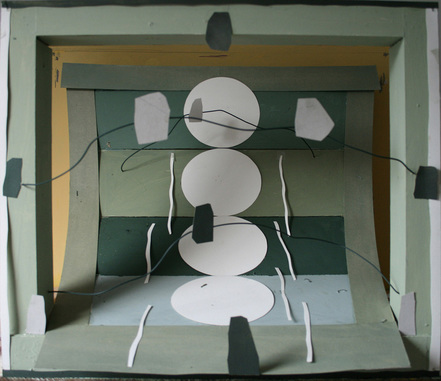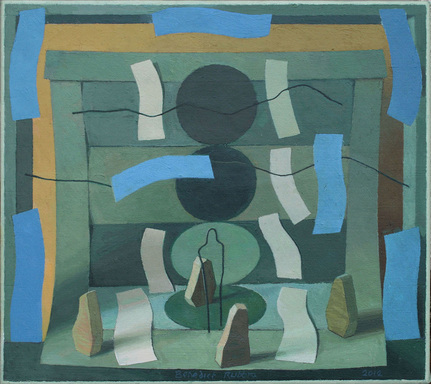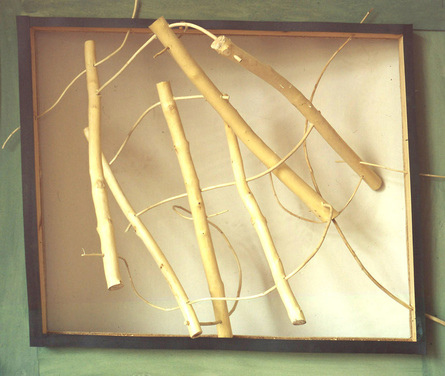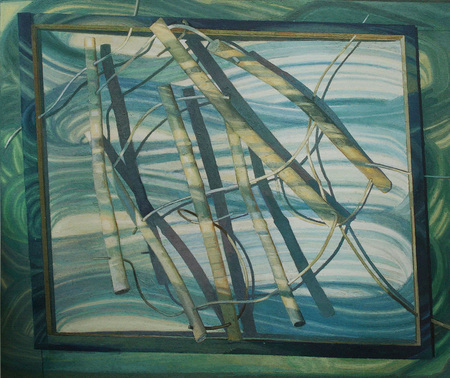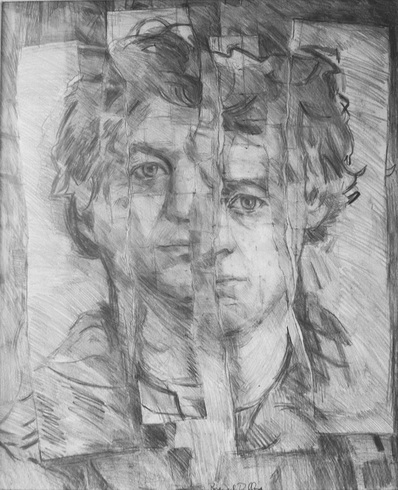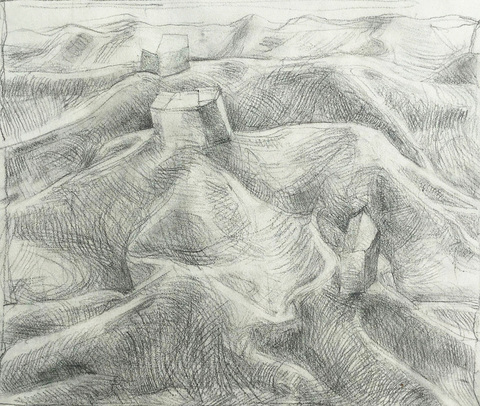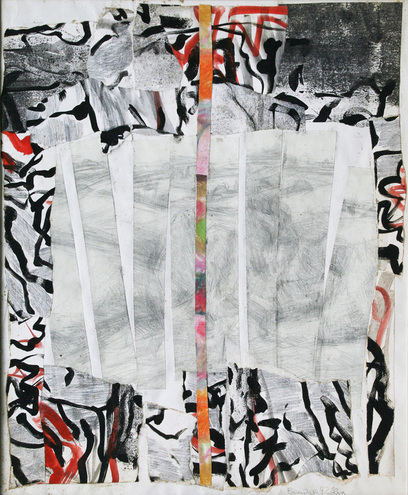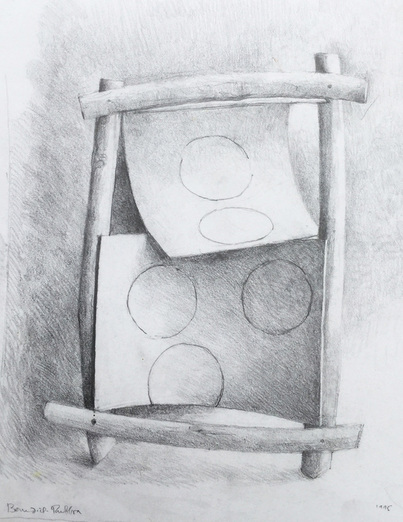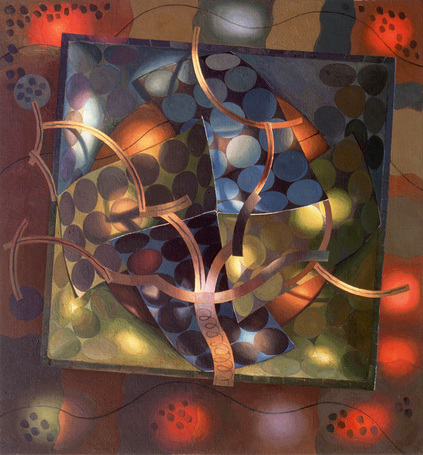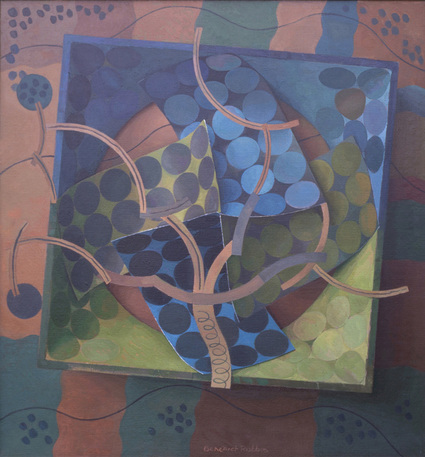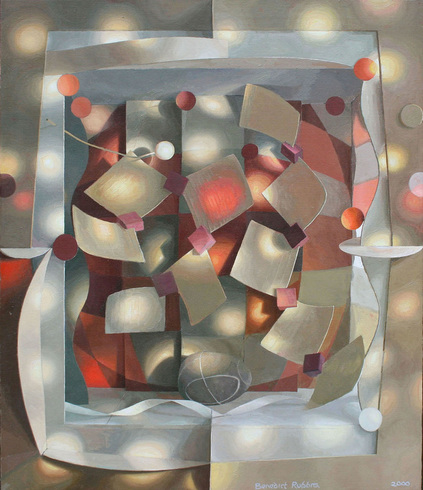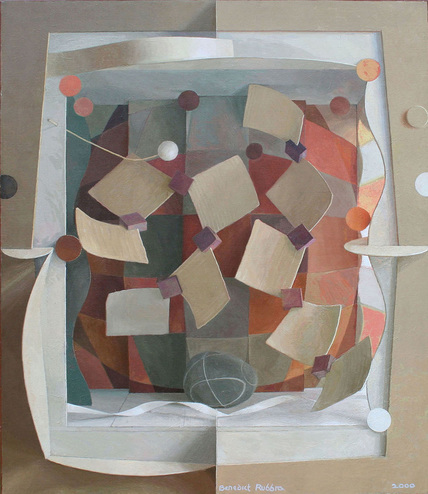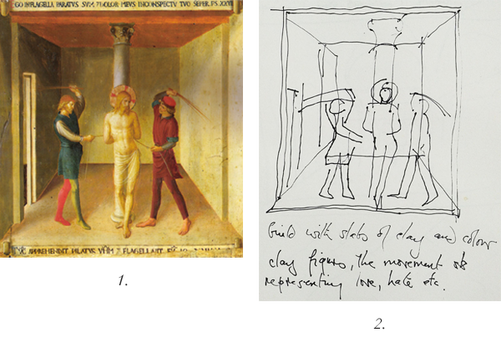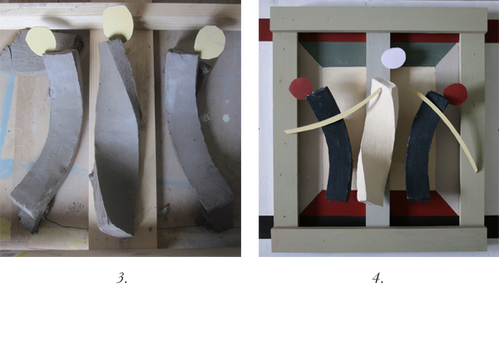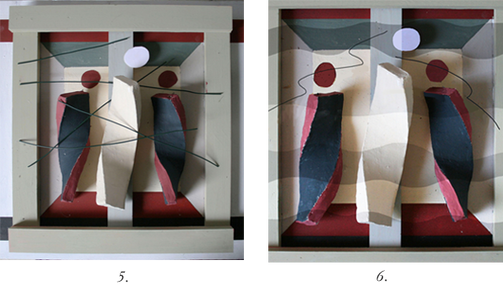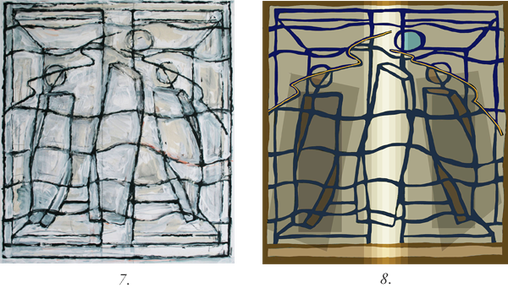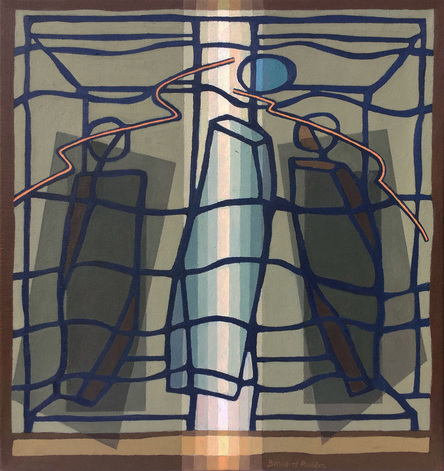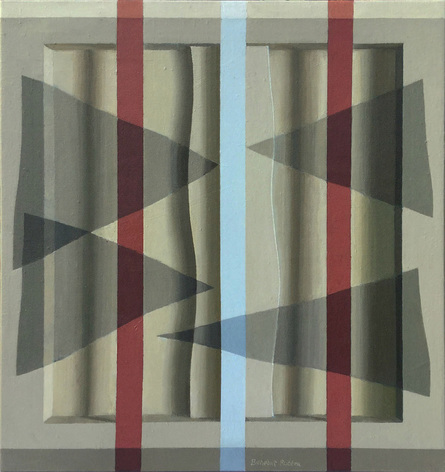I build structures that are destined to be the point of departure for each painting.
All the works shown are acute observations of things that I have made.
All the works shown are acute observations of things that I have made.
Forty years ago I began making studies of drawings that had been dismantled and then reassembled. This process of looking at what I had made became the essence of my method of work.
These simple structures gradually became more complex using a wide choice of materials and finally they were animated with projected light.
The structure becomes the space in which I can translate my subconscious and chaotic ideas into a balanced order.
I add or subtract coloured paper or strips of wood and perhaps “draw” lines with string or wire, continually manipulating and changing ideas in a way impossible in a painting where the over painted areas are necessarily lost. This continuous movement between the construction and the painting expresses my interest in the cyclical processes of genesis, growth and decay.
I use light as a medium to study the concept of transience and the idea that a changing light can transform mood and colours. This idea is central to the understanding of how we perceive.
The structure becomes the space in which I can translate my subconscious and chaotic ideas into a balanced order.
I add or subtract coloured paper or strips of wood and perhaps “draw” lines with string or wire, continually manipulating and changing ideas in a way impossible in a painting where the over painted areas are necessarily lost. This continuous movement between the construction and the painting expresses my interest in the cyclical processes of genesis, growth and decay.
I use light as a medium to study the concept of transience and the idea that a changing light can transform mood and colours. This idea is central to the understanding of how we perceive.
The painting begins when the structure is complete and when the painting is finished the structure has served its purpose.
Ideas are concluded before the painting begins.
Dame Frances Ashcroft writes:
My interest in the relationship between science and art was stimulated when I noticed Benedict’s use of paired paintings depicting the same model lit and then unlit. This reminded me of the resting and stimulated phases of the insulin secreting cells on which I work. Benedict drew and made notes in my laboratory and then I watched him constructing his model. The precise calculations that ensured the correct perspective, the acute and accurate observation of detail and the precision with which the colours were chosen, seemed scientific in their approach. I have a conceptual model that can be expressed in diagrammatic form of how an increase in the blood-sugar level stimulates the beta-cells in the pancreas to secrete insulin. Ben’s painting of our work was totally different, and fascinatingly encompassed more than just our scientific hypothesis. I see it as a synthesis of science, the methods we use in our experiments and a reflection on life and death.
Professor Dame Frances Ashcroft FRS
Department of Physiology, Anatomy & Genetics and Trinity College, University of Oxford
Ideas are concluded before the painting begins.
Dame Frances Ashcroft writes:
My interest in the relationship between science and art was stimulated when I noticed Benedict’s use of paired paintings depicting the same model lit and then unlit. This reminded me of the resting and stimulated phases of the insulin secreting cells on which I work. Benedict drew and made notes in my laboratory and then I watched him constructing his model. The precise calculations that ensured the correct perspective, the acute and accurate observation of detail and the precision with which the colours were chosen, seemed scientific in their approach. I have a conceptual model that can be expressed in diagrammatic form of how an increase in the blood-sugar level stimulates the beta-cells in the pancreas to secrete insulin. Ben’s painting of our work was totally different, and fascinatingly encompassed more than just our scientific hypothesis. I see it as a synthesis of science, the methods we use in our experiments and a reflection on life and death.
Professor Dame Frances Ashcroft FRS
Department of Physiology, Anatomy & Genetics and Trinity College, University of Oxford
Photography and computer technology is a new tool for making models that I want to utilize.
1. The flagellation by Fra Angelico is small in dimension but unequivocally profound in content. The echoes of a conflict between violence and vulnerability fill an empty space. Tranquility radiates from the center of the painting.
2. This sketch, made twenty years ago, was discovered after I began making the model. The idea of using slabs of clay had remained dormant.
3. Three slabs of clay are placed in a box. The central slab is twisted as if avoiding a threat from either side. Thee shapes cut from cardboard help to suggest the human form.
4. The center is white and the two shapes on either side are black and red. The box becomes a room and two curves of cardboard become whips.
2. This sketch, made twenty years ago, was discovered after I began making the model. The idea of using slabs of clay had remained dormant.
3. Three slabs of clay are placed in a box. The central slab is twisted as if avoiding a threat from either side. Thee shapes cut from cardboard help to suggest the human form.
4. The center is white and the two shapes on either side are black and red. The box becomes a room and two curves of cardboard become whips.
5. The idea of using spikes of wire and shadows are abandoned.
6. A photograph of the final arrangement of forms within the box is transferred to the computer and then reformed.
7. A drawing of this new image is made from the computer screen
8. This drawing is photographed and the spaces, colours, tones and lines are resolved on the computer screen. The image is now ready to be painted.
6. A photograph of the final arrangement of forms within the box is transferred to the computer and then reformed.
7. A drawing of this new image is made from the computer screen
8. This drawing is photographed and the spaces, colours, tones and lines are resolved on the computer screen. The image is now ready to be painted.
